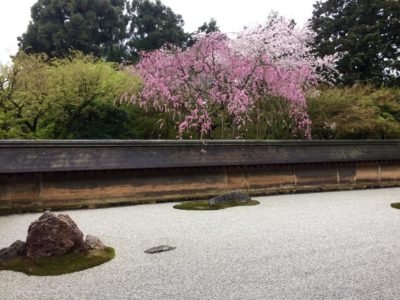What are you hoping to see, feel, and experience on your trip to Japan? Many people who are attracted by Japan as a holiday destination want to learn and see more of the minimalist philosophy that is often associated with Japan. Has minimalism always been in Japan? What does minimalism look like in Japan nowadays, and where can you find examples of minimalism in Japan?

Japanese Way of Life
Many people outside of Japan think that minimalism is a regular way of life in Japan. They think that many Japanese homes look like a minimalists’ heaven with a cultural tradition steeped in zen and an aversion of wastefulness. While this is not necessarily true of everyone and many people who lived through the war or were raised by those who were born before WW2 actually have difficulty throwing stuff away that they have too much stuff in their house, it is a fact that living a minimalist lifestyle is made easy in Japan for those who want to live that way. Besides, minimalism has a very long tradition in Japan that goes many centuries back.
Kids in school learn how to take care of their stuff and not waste anything from a young age, there are large household good stores such as Muji and Nitori that sell products to support a minimalist lifestyle, and with small housing in the city keeping it simple is often a necessity.
Minimalism and Zen Buddhism
There can be great beauty in simplicity. It may look simple to just have nothing there, but that is not the way it works. It is actually quite difficult to be simple and beautiful. When both Zen Buddhism and green tea emerged in Japan under influence of Chinese Buddhism in the 12th century, Japan already had a love of simplicity and minimalism as can be seen in pottery and art of that time. Zen Buddhism only made this love more pronounced with its simple main principles of learning how to meditate and just to be in the moment.
In fact, for a very long time, the overflowing lifestyle you see all over the world nowadays was still in its infancy, and there was a sudden increase in overabundance, just like the Westernization of food that happened quite suddenly in Japan. There was a time when we didn’t have anything, and then there was a contra-reaction to the time when we couldn’t have anything, and because of that environmental problems and pollution emerged.
Maybe the current movement of minimalism is also a reaction, like how living in the city makes you envy the country life, and living in the country makes you envy the city life. It’s always been that way, but it has still been a longer period of time in Japan when people lived with less stuff.
Minimalism in Japan Now
If you think about it, many things that Japanese people use at home seem to be rather compact and convenient in usage. Have you, for example, ever seen a compact Japanese kitchen that still has all the appliances you need? Things like a special narrow cabinet for the rice that measures out cups of rice automatically with one push of a button, tiny dishwashers that still have enough space for 90% of a small family’s dishes, boxes of all kinds of shapes and sizes to organize the kitchen, a tiny fish grill as a standard in your stove, and amazingly compact bento boxes to hold a complete and nutritious lunch.
Unlike in Europe and America, Japanese kitchens are often compact, so the way space is used is quite different. When an apartment only has one room (studio apartment) every square meter has to be utilized optimally. Sometimes it’s used as a living room, sometimes it’s a bedroom, sometimes it’s a study room. Many modern small rooms have great little details that make life easier such as a space designed for a pet, a balcony with built-in laundry poles, and of course a space designated specifically to place your futon come daytime.
Of course, in such a space-challenged apartment it is a good idea not to own too much stuff, making the minimalist lifestyle a lot more attractive, especially as you already have many things you need in the apartment. They already understood this back in the Edo period, when many families lived together in only one room that was used as a bedroom at night and a living room in the day.
Experience Minimalism in Japan
So if you come to Japan and want to experience minimalism, where should you go? First of all, Zen temples are great places to feel the peace and calm of a simple, quite empty environment. Near Tokyo, the Hokokuji in Kamakura is a wonderful temple to visit if you want to experience a serene atmosphere, and in Kyoto, the Ryoan-ji is an absolute must-see for those interested in Zen and minimalism.
Every little detail in the temple design has its purpose, for example, look out for the little buckets that hang in a line from the temple’s spout; they are actually there to let the rain come down in a beautiful dancing movement. It is a typical example of a part of Zen architecture.
Japanese craftsmen tend to have one thing in common; they concentrate on making only one thing and keep perfecting their skill to create that one thing for the rest of their career so it just keeps getting better. This kind of ingenuity by the craftsmen could have contributed to the beauty of Japanese products; superior quality and versatility. Where should you go to find the work of these craftsmen?
Japanese Design
If you go to any old family-owned restaurant that has been in the business for generations you will find this devotion in the food. A neighborhood like Yanaka has plenty of these places. If you are interested in artisanal handiwork, the Higashiyama area in Kyoto is great. You should look for the Sannenzaka and Ninenzaka streets in particular. Visiting one of Muji’s stores that are spread all over Japan is a must for anyone who loves super convenient and minimalist design. You can surely find a nice souvenir that will help a minimalist lifestyle at home.
And then, staying in a ryokan for one or more nights is the way to completely immerse yourself in minimalist tradition. You will feel it in the room, the food, and the service; high quality and great attention to detail are an integral part of the ryokan experience.
How to Incorporate Minimalism in Your Life
The balance of how much things to have is different for everyone, but when you think about experiencing a lot of things without asking for a lot, your relationship with things and your comfort is an important factor. If you have too many things, you won’t be able to move when you want to, or you won’t have the freedom to spend more time maintaining the things you have.
On the other hand, if you lose everything you own it is sure to be inconvenient. When someone special comes to visit you at home, you can’t entertain them if you don’t have a single plate or cup. In Zen temples, they try to keep things in an ideal state; not too much and not too little.
The way Zen Buddhism and minimalism are experienced and practiced is a bit different for everyone, and it’s fun to create your own ideals. Little by little, you will become more refined and your style becomes more established. If you do well, there will be a mental calmness, and living a simpler and more powerful life will be the natural outcome.
Recently, Marie Kondo also shared her interesting take on the minimalist lifestyle through books and a Netflix series and became one of the world’s most popular declutter gurus. If you suffer from having too much stuff in your home and not knowing where to start with cleaning up, getting familiar with her joy-sparking method might be a great idea.
Your Japan Tour
As seasoned Japan experts, we can help you create your perfect Japan tour including destinations like Zen temples and other places and experiences related to minimalism. Contact us to start planning your unforgettable holiday to this fascinating country full of once-in-a-lifetime experiences, culture, history, nature, and delicious food!

